 Your new post is loading...
 Your new post is loading...

|
Scooped by
Gilbert C FAURE
December 15, 2013 11:27 AM
|
RHUMATOLOGIE - RHEUMATOLOGY
Obviously a topic of interest for so many people: for the patient, it includes aching muscles, tendons and joints.. for MDs and researchers, it covers degenerative diseases as well as arthritis, often associated with various autoimmune diseases (see autoimmunity http://www.scoop.it/t/autoimmunity). Fortunately, new diagnostic tools are available https://www.scoop.it/t/rheumatology-rhumatologie?q=diagnosis and new biotherapies https://www.scoop.it/t/rheumatology-rhumatologie?q=therapy allowed to improve the prognosis and the quality of life of patients Guess why some topics are much covered than others? Simply because, they were personal topics of research before, for instance Synovial membrane Crystal Deposition Diseases Rheumatoid arthritis with various methods Scanning Electron Microscopy Immunohistology

|
Scooped by
Gilbert C FAURE
December 9, 6:18 AM
|
In this Review, the authors summarize the potential role of emerging viruses in autoimmune rheumatic diseases (AIRDs). They describe the association between viruses and AIRD flare ups, the putative mechanisms linking AIRD to viral infections and hormone modulation of viral pathogenesis and...

|
Scooped by
Gilbert C FAURE
November 30, 11:05 AM
|
🖐️ #Arthrosedigitale : 1ere recommandations de la Société Française de rhumatologie Société Française de Rhumatologie (SFR) et le la Société Française de Médecine Physique et de Réadaptation SOFMER sont disponibles ! (2025)
⭐ ce qu’il faut retenir ⭐
L’arthrose des doigts et de la base du pouce (rhizarthrose) : fréquente, invalidante et trop de fatalisme des soignants et des patients
🎯Prise en charge pluridisciplinaire +++
🔍 1. Diag. clinique (confirmation radio) + évaluation centrée le retentissement
douleurs/raideur mécaniques des doigts et/ou de la base du pouce puis nodosités (ostéophytes = production osseuse exubérante) et gène fonctionnelle croissante (force et préhension fine) chez un(e) patient(e) de plus de 40 ans. La fréquence et l'intensité des poussées inflammatoires conditionne la sévérité (attention aux diagnostics différentiels comme rhumatisme psoriasique), en plus des atteintes esthétiques (déformations).
🧩 2. Toutes les arthroses digitales ne se ressemblent pas (IP, pouce, érosive…) !
👉 Adapter les stratégies : qualité de vie, poussées inflammatoires, comorbidités, objectifs du patient.
💪 3. Le cœur du traitement : non-pharmaco d’abord !
✔️ Exercices pour tous +++
Mobilité, renforcement, grip, proprioception avec soutien #kiné et #APA
🎥 Des vidéos SFR existent pour l’auto-rééducation.
✔️ Ergonomie & aides techniques #ergothérapie pour diminuer les contraintes
✔️ Orthèses
Orthèse pour rhizarthrose : recommandée, au mieux sur mesure.
Orthèses pour IP : option possible
✔️ Chaleur locale (paraffine, boue…) : Effet antalgique court terme, optionnel.
❌ À ne pas recommander
Laser, ondes, acupuncture, kinesiotaping : pas d’efficacité démontrée.
💊 4. Traitements médicamenteux : symptomatique sans effet protecteur sur le cartilage
✔️ anti-inflammatoires topiques (gel ou pommade) : 1ère intention
✔️ anti inflammatoires non stéroïdiens oraux (per os) en cas de poussée, durée courte, vigilance cardiovasc/renale/digestive.
✔️corticoides oraux faible dose (10 mg/j) : uniquement atteintes digitales inflammatoires, durée limitée, jamais au long cours.
✔️ Paracétamol: option ponctuelle, sans effet symptomatique majeur.
✔️ Chondroïtine sulfate 800 mg/j
Efficacité symptomatique modérée prouvée (non remboursé).
✔️ injections cortisone (infiltrations) : niveau de preuve faible malgré utilisation fréquente, à réserver aux poussées inflammatoires (IP)
❌ À éviter
Opioïdes (faible efficacité + tolérance), jamais morphine
PRP, dérivés botuliques, acide hyaluronique : pas de bénéfice démontré
Colchicine, hydroxychloroquine, Méthotrexate, anti-TNF/IL6/IL1 → négatifs
🛠️ 5. Chirurgie : seulement après échec du traitement médico-rééducatif
À envisager pour : rhizarthrose, IP douloureuses et abimées
→ arthroplastie (prothèse), arthrodèse, trapézectomie selon les cas.
https://lnkd.in/eAszka3h
merci aux 25 experts multidisciplinaires sous la coordination de
Alice Courties Jérémie SELLAM
💥 à diffuser ! 💥

|
Scooped by
Gilbert C FAURE
November 25, 1:29 PM
|
This narrative review explores the role of subchondral bone in the pathophysiology of osteoarthritis (OA), emphasizing the biomechanical and biochemic…

|
Scooped by
Gilbert C FAURE
November 16, 3:52 AM
|
In this Viewpoint article, six patients and patient advocates discuss the role of the patient in rheumatology, the current unmet needs of patients and promising advances. By reflecting on their own lived experiences, the authors emphasize the integral role of patients for progress in the field.

|
Scooped by
Gilbert C FAURE
October 9, 5:57 AM
|
📢 NEW REVIEW
Although psoriatic arthritis and rheumatoid arthritis are both common types of inflammatory arthritis characterised by synovial inflammation, there are distinct molecular and cellular landscapes between these conditions.
In this Review, Ryan Malcolm Hum and colleagues explore how research of the synovium has advanced the understanding of psoriatic arthritis, the potential of identified cell types and cytokines as biomarkers and novel therapeutic targets, how limited sample sizes in high-dimensional studies are hindering clinical translation, and the future directions for synovial research in psoriatic arthritis.
Maria Christofi, Lysette Marshall, NIHR Manchester Biomedical Research Centre (BRC)
Read the full Review here ➡️ https://lnkd.in/eFY6uAbF
Alt text: Previously identified cell types and cytokines implicated in psoriatic arthritis pathogenesis in the synovial fluid and synovial tissue

|
Scooped by
Gilbert C FAURE
August 7, 7:38 AM
|
Sjögren’s Disease: A Name Change with Real Impact
A powerful reminder for all of us in the Sjögren’s community and especially here at the NECESSITY project: language matters.
Through international consensus, published in Nature Reviews Rheumatology, officially retired the term “Sjögren’s syndrome” in favor of “Sjögren’s disease”and eliminates the distinction between “primary” and “secondary” forms. From now on, Sjögren’s is Sjögren’s whether or not it occurs with another autoimmune condition.
This shift is far from symbolic, it’s a meaningful change that reflects the seriousness of this condition and the lived experience of millions.
✅ Disease, not syndrome: Recognizes Sjögren’s as a complex, systemic autoimmune disease—not just a loose cluster of symptoms.
✅ Goodbye “primary” and “secondary”: These outdated terms are replaced by “associated” when applicable, offering more accurate and less stigmatizing language.
✅ Why it matters: Terminology shapes how a disease is perceived, diagnosed, and treated. This update supports better care, stronger research, and deeper validation for patients.
As the Sjögren’s Foundation underscores in the linked article, it’s time for all of us, be it clinicians, researchers, journals, media, and advocates to embrace this change and reflect it in our work and communication carefully.
This is a meaningful step forward for scientific clarity, clinical progress, and, above all, for patients. 💙
https://lnkd.in/ex8jcE5C
#SjögrensDisease #AutoimmuneAwareness #PatientAdvocacy #MedicalTerminology #NatureReviewsRheumatology #SjögrensCommunity

|
Scooped by
Gilbert C FAURE
June 13, 4:07 AM
|
Si vous rencontrez quelqu’un qui a les yeux secs, la bouche sèche, des douleurs, une fatigue chronique, c’est peut être parce que chacun de ces signes est fréquent. Mais c’est peut être dû à une maladie de Sjogren…..
Si voulez
- savoir ce qu’est cette maladie
- pourquoi on ne dit plus « Syndrome de sjogren » mais bien « Maladie de Sjogren »
- pourquoi on ne dit plus « Syndrome de Sjogren secondaire »
N’hésitez pas à télécharger cet article grâce au lien suivant:
https://rdcu.be/eqlz1
⸻
If you meet someone with dry eyes, a dry mouth, pain, or chronic fatigue, it might just be because each of these symptoms is common. But it could also be due to Sjögren’s disease…
If you want to:
• understand what this disease is,
• know why we no longer say “Sjögren’s syndrome” but rather “Sjögren’s disease”,
• learn why the term “secondary Sjögren’s syndrome” is no longer used,
feel free to download this article using the following link:
https://rdcu.be/eqlz1

|
Scooped by
Gilbert C FAURE
May 31, 9:15 AM
|

|
Scooped by
Gilbert C FAURE
May 20, 5:06 AM
|
The COVID-19 pandemic changed healthcare practices and social media played a significant role in those changes. While social media and online practice communities allow collaboration and engagement,

|
Scooped by
Gilbert C FAURE
May 7, 10:45 AM
|

|
Scooped by
Gilbert C FAURE
March 30, 9:59 AM
|
There is an ongoing search for novel biomarkers to enhance diagnosing and monitoring patients with rheumatic diseases (RDs). We conducted a systematic review and meta-analysis to investigate the potential role of the soluble cluster of differentiation 40 (sCD40) and sCD40 ligand (sCD40L), involved...

|
Scooped by
Gilbert C FAURE
March 19, 4:19 AM
|
Figure 2. Overview of the pathogenesis and treatment of OA. In osteoarthritis (OA), alarmins are endogenous molecules released in response to various forms of damage. These molecules bind to pattern recognition receptors (PRRs) on different cells, triggering either an inflammatory or regenerative...
|

|
Scooped by
Gilbert C FAURE
December 15, 6:14 AM
|
Takayasu arteritis (TAK) is a rare, chronic, large-vessel vasculitis that primarily targets the aorta and its major branches, leading to vascular stenosis, occlusion and aneurysm formation. TAK, which is characterized by granulomatous inflammation of the arterial wall, predominantly affects women, with peak onset typically occurring between 20 and 40 years of age. The disease exhibits substantial geographic variability in prevalence, with emerging evidence suggesting that these differences are partly owing to variations in genetic susceptibility loci, particularly within immune-related genes; however, the role of environmental factors in the disease aetiology remains poorly understood. Non-invasive imaging techniques have become central to both diagnosis and disease monitoring. Furthermore, the development of biomarkers holds promise for more accurate assessment of disease activity. The management of TAK is evolving, driven by an improved understanding of disease pathogenesis. The growing use of biologic agents is providing new treatment options, particularly for patients with refractory or relapsing disease. By integrating these developments, this Review is aimed at serving as a comprehensive resource for clinicians and researchers dedicated to improving the understanding and management of TAK. This Review article provides an update on the pathophysiology, diagnosis and treatment of Takayasu arteritis. The authors emphasize the need for a multidisciplinary approach to the diagnosis and management of this complex disease.

|
Scooped by
Gilbert C FAURE
December 9, 4:01 AM
|
🔥Don't miss this #FeaturePaper by Moawiah Naffaa, PhD and Ola A. Al-Ewaidat.
Emerging AI- and Biomarker-Driven Precision Medicine in Autoimmune Rheumatic Diseases: From Diagnostics to Therapeutic Decision-Making
🔗More details: https://brnw.ch/21wY2dx
#OpenAccess #AutoimmuneRheumaticDiseases #ArtificialIntelligence #Biomarkers #DigitalHealth

|
Scooped by
Gilbert C FAURE
November 28, 4:26 AM
|

|
Scooped by
Gilbert C FAURE
November 22, 2:52 AM
|

|
Scooped by
Gilbert C FAURE
November 12, 5:13 AM
|

|
Scooped by
Gilbert C FAURE
August 24, 8:15 AM
|

|
Scooped by
Gilbert C FAURE
August 3, 6:44 AM
|

|
Scooped by
Gilbert C FAURE
June 11, 4:38 AM
|
Big thanks to Korng Ea for delivering a fantastic talk at the last ITN INTEC #ISSEC webinar before the summer break!
We also wish to express our gratitude to all the other speakers who contributed throughout the first semester 2025 series Makarand Risbud Christoph Winkler @Vicky Macrae @José-Luis Millan Anabela Bensimon Brito
Finally, thank you to all attendees for your active participation, which has been making this series a great success. See you in a few months with a new program built by Flóra Szeri, PhD

|
Rescooped by
Gilbert C FAURE
from AUTOIMMUNITY
May 30, 5:41 AM
|
The ACR has released its 2025 Systemic Lupus Erythematosus (SLE) treatment guidelines and consensus-based good practice statements, applicable to children and adults with SLE. Overall, the goals of SLE management are to achieve remission or a low level disease activity, reduce morbidity and mortality, and minimize treatment-related adverse events. For treatment of SLE, they recommend universal use of hydroxychloroquine, minimizing glucocorticoid exposure, and early introduction of conventional and/or biologic immunosuppressive therapies.

|
Scooped by
Gilbert C FAURE
May 14, 3:56 AM
|
💡Indeed the nosology of CPPD disease is out dated. The G-CAN is aiming at changing the nomenclature
👉🏼 Follow up the topic

|
Scooped by
Gilbert C FAURE
April 19, 10:14 AM
|

|
Scooped by
Gilbert C FAURE
March 21, 9:28 AM
|

|
Scooped by
Gilbert C FAURE
March 14, 4:56 AM
|
|



 Your new post is loading...
Your new post is loading...


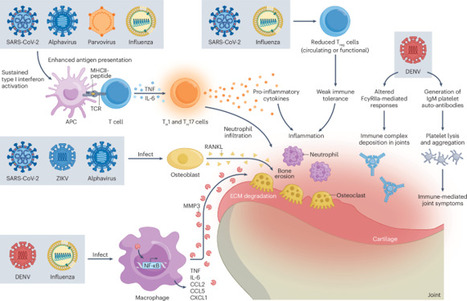

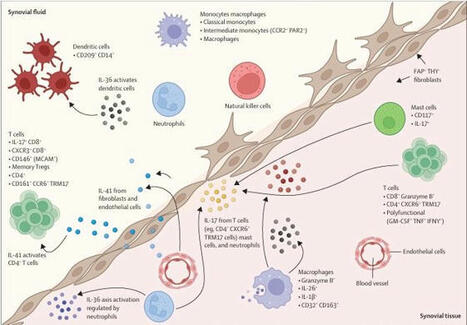
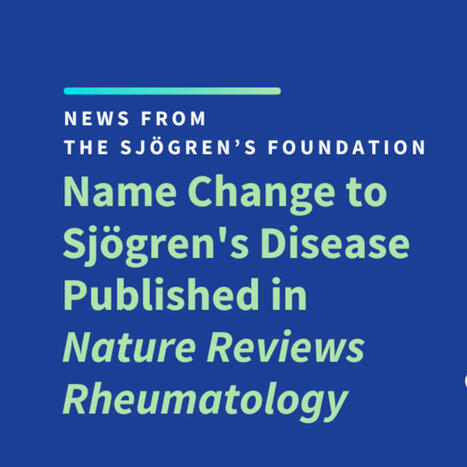
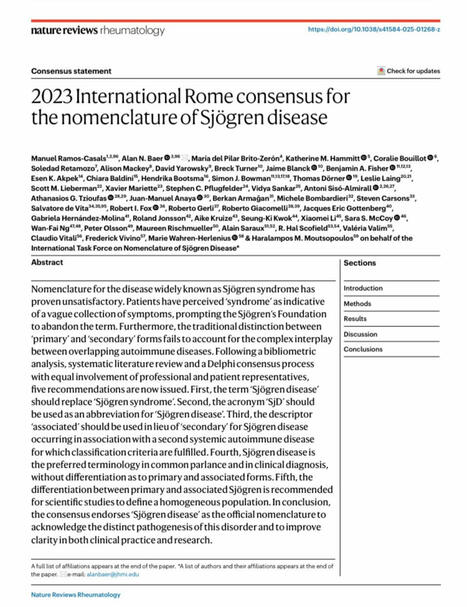
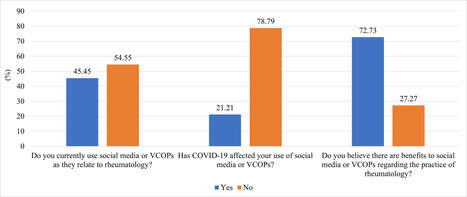
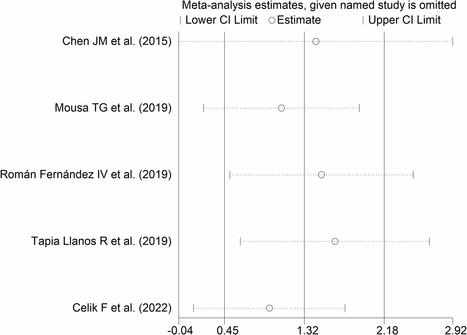

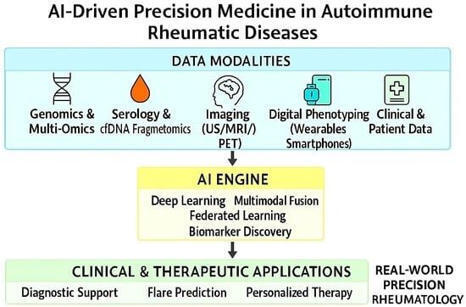
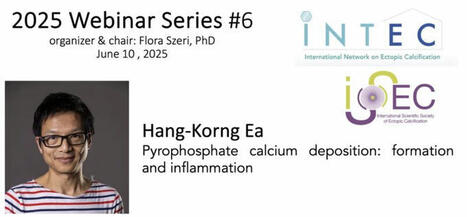


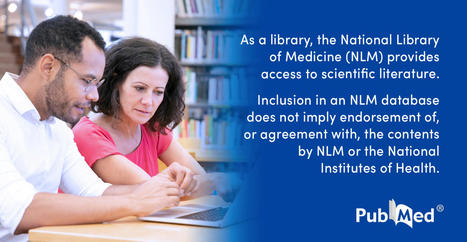





January 2016
still few viewers (#650) for this topic, but >1280 posts and 2000 views, much less than other immunology topics, but growing!
March 2024 > 2300 sccops, >10.1 K views, > 2600 visitors